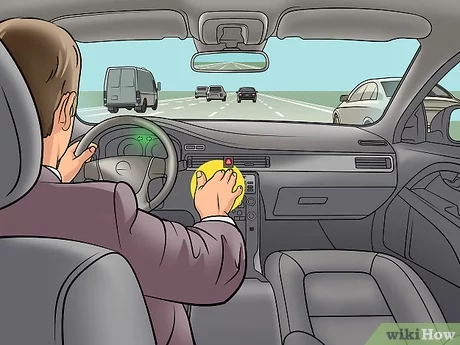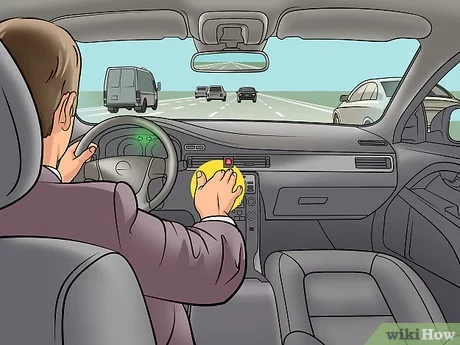Driving a car without brakes is a nightmare scenario that no one wants to experience. Whether it’s due to a mechanical failure or a sudden emergency, knowing how to stop a car without brakes is a critical skill that can save your life and the lives of others on the road. Despite the panic and fear that comes with this situation, there are several techniques that can be used to bring a car to a safe stop. In this article, we’ll explore some of the most effective methods for stopping a car with no brakes.
From using the emergency brake to downshifting, there are plenty of options available to stop a car without brakes. However, it’s important to remember that each situation is unique, and the right technique will depend on factors such as the speed and terrain. By understanding these methods and practicing them in a safe environment, you can be better prepared to handle the unexpected and stay safe on the road. So, let’s dive in and explore the different ways to stop a car with no brakes.
- Shift into a lower gear to slow down the car
- Use the handbrake or parking brake to gradually slow the car down
- Look for a safe place to steer the car off the road
- Use any obstacles like bushes or barriers to slow the car down further
- Once the car has stopped, call for help or assistance

How to Stop a Car With No Brakes?
Driving a car is a great responsibility that requires skill, knowledge, and attention. One of the worst nightmares for any driver is to find themselves in a situation where their vehicle’s brakes are not working. The panic and fear can be overwhelming, but it is essential to stay calm and take the necessary steps to stop the car safely. In this article, we will discuss ten steps to stop a car with no brakes.
Step 1: Stay Calm and Alert
The first and most crucial step is to stay calm and alert. Don’t panic and try to think rationally. Keep your eyes on the road and try to find a safe spot to stop the car.
If you are driving on a highway or busy road, turn on your hazard lights to alert other drivers that there is a problem with your vehicle. Use your horn to alert pedestrians or cyclists if necessary.
Step 2: Downshift to a Lower Gear
If your car has a manual transmission, downshift to a lower gear to slow down the vehicle. This technique is also known as engine braking.
If your car has an automatic transmission, shift into a lower gear manually. This will help to slow down the car and reduce the speed.
Step 3: Use the Emergency Brake
The emergency brake, also known as the handbrake, is a secondary braking system that can help you stop the car in an emergency. Pull the emergency brake lever slowly and steadily to avoid locking the rear wheels.
If you pull the emergency brake too hard and too quickly, the rear wheels may lock up, causing the car to skid. This is why it is essential to pull the emergency brake slowly and steadily.
Step 4: Pump the Brakes
If your car has a hydraulic braking system, you can try pumping the brakes to build up pressure. This technique may help to slow down the car and reduce the speed.
However, if your car has a brake fluid leak or a problem with the brake master cylinder, pumping the brakes may not work.
Step 5: Use the Terrain
If you are driving downhill, use the terrain to your advantage. Turn off the engine and let the car slow down naturally.
If you are driving on a flat road, try to find a soft surface, such as grass, sand, or gravel, to slow down the car. Use the car’s momentum to roll onto the soft surface, which will help to slow down the car.
Step 6: Turn on the Hazard Lights
As mentioned earlier, turning on the hazard lights is essential to alert other drivers of your situation. This will help to avoid any collisions or accidents.
Step 7: Steer the Car
If you cannot stop the car, try to steer it away from other vehicles, pedestrians, or obstacles. Use the car’s momentum to steer it towards a safe spot.
Step 8: Use the Horn
Use the horn to alert other drivers or pedestrians of your situation. This will help to avoid any collisions or accidents.
Step 9: Call for Help
If you cannot stop the car, call for help immediately. Use your phone to call 911 or your roadside assistance provider.
Step 10: Get the Car Inspected
After you have stopped the car safely, get it inspected by a professional mechanic. The mechanic will be able to diagnose and fix the problem with the braking system.
In conclusion, driving a car with no brakes can be a terrifying experience, but it is essential to stay calm and take the necessary steps to stop the car safely. By following the ten steps outlined in this article, you can stop your car in an emergency and avoid any accidents or collisions. Remember, safety should always be your top priority when driving.
Key Takeaways: How to Stop a Car With No Brakes?
- Shift into a lower gear: If you have a manual transmission, shift into a lower gear to slow down the car. This will help you to reduce the speed of the car and stop it eventually.
- Use the parking brake: Pulling up the parking brake can help you to slow down the car. However, if you are driving at high speed, this might not be very effective. Also, be careful not to pull up the parking brake too hard, as it can cause the car to skid.
- Use the emergency brake: In case you are not able to stop the car with the parking brake, use the emergency brake. This can help you to slow down the car to a stop. However, using the emergency brake can cause the car to skid, so use it with caution.
- Use the engine to slow down: If you have an automatic transmission, shift to neutral and use the engine to slow down the car. This will help you to reduce the speed of the car and eventually stop it.
- Look for a safe place to stop: As soon as you realize that your brakes are not working, look for a safe place to stop the car. Try to avoid busy roads, intersections or curves. Look for a straight, clear road and gradually slow down the car till it comes to a complete stop.
- Get your brakes checked: After you have stopped the car, get your brakes checked by a professional mechanic. This will help you to identify the cause of the problem and prevent it from happening again in the future.
In case of emergency situations like this, it is important to stay calm and act quickly. Follow these key takeaways to stop a car with no brakes and ensure your safety and that of others on the road.
How to Survive Brake Failure
As a professional writer, it is my responsibility to provide a satisfying conclusion to any given topic. In the case of learning how to stop a car with no brakes, it’s crucial to remember that prevention is always better than cure. Regular maintenance of your vehicle, including checking brakes, will save you from the hassle of having to deal with a brake malfunction. However, in the event that your brakes fail, it’s essential to remain calm and remember the following steps.
Firstly, try to downshift to a lower gear, as this will reduce your speed and help you come to a stop. Secondly, steer to a clear path and try to avoid any obstacles. Lastly, use the emergency brake, which is designed to stop the vehicle in case of brake failure. Remember, panicking or making sudden movements can worsen the situation, so remain calm and follow these steps to ensure your safety and the safety of others on the road.

